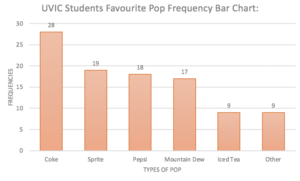Using the SAMR framework I would evaluate my H5P video where I explain how to use a frequency table in excel as redefinition. I think this because the video is interactive which transforms the students learning experience to more application rather than just them sitting there and listening to the video. Furthermore, it creates this technological experience where the student has to be further engaged in order to answer the questions. The technology I have used in this video, including the additional text boxes and multiple-choice questions allow for the creation of new tasks for the learner which were previously inconceivable. Overall, my video transforms the learning from a regular lesson, to a more engaging task, through the implementation of technology.
I chose to use this framework because I thought that the SAMR models description for redefinition, exactly matched the use of an interactive video and the technology and features I included.
The first multimedia principle that relates to my H5P video is the signalling principle. This principle is utilized at the beginning of my interactive video as the text box is added that highlights key information that I feel the student should know. In addition, the multiple-choice questions are cues for important information that highlight what the student should know and should be thinking about. I also tried to make the video using the personalization principle, where it felt like more of a conversation while trying to explain, rather than a formal style. The feedback principle is also utilized as the multiple-choice questions give immediate feedback to the student which allow for them to know where their knowledge stands.
Here is the link to my 360 tour:
https://earth.google.com/earth/rpc/cc/drive?state=%7B%22ids%22%3A%5B%221koEmbFRN9D1mEaIgXcuB9HIpQNfCkXFe%22%5D%2C%22action%22%3A%22open%22%2C%22userId%22%3A%22112946379012463882348%22%2C%22resourceKeys%22%3A%7B%7D%7D&usp=sharing

Photo by Marvin Meyer on Unsplash







Recent Comments